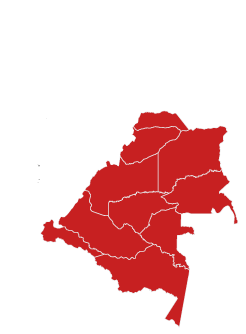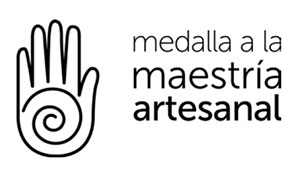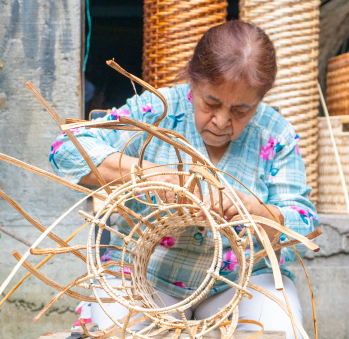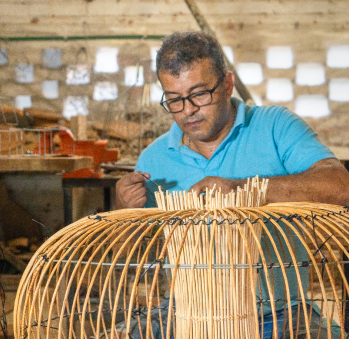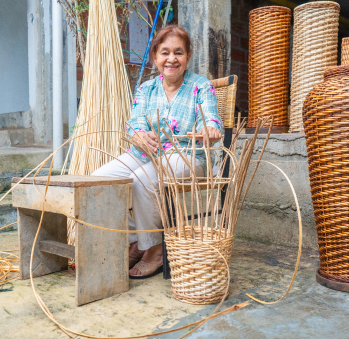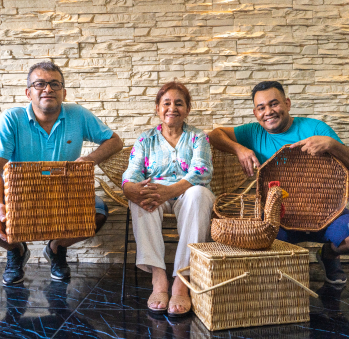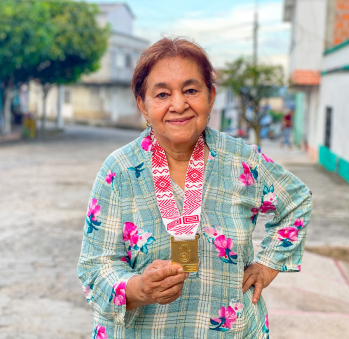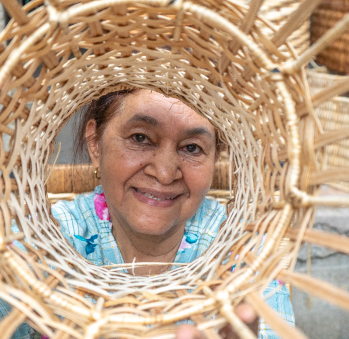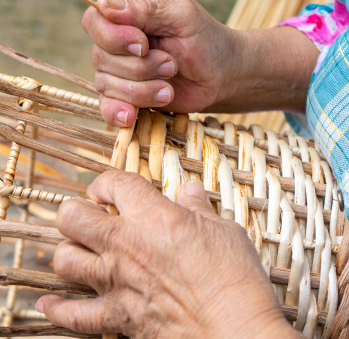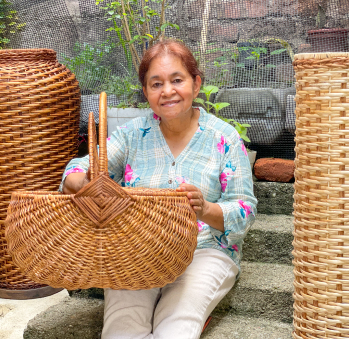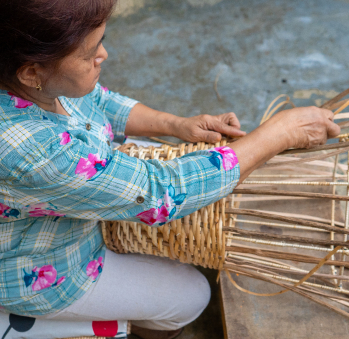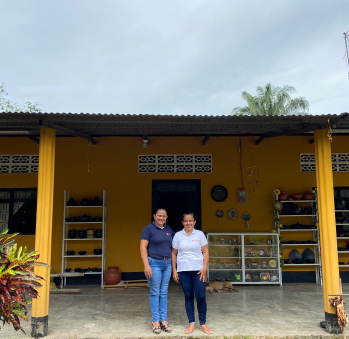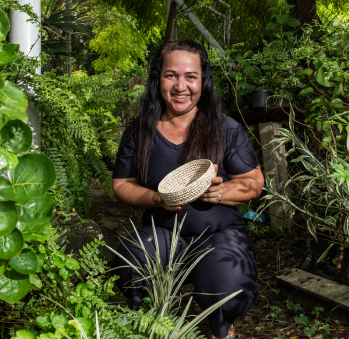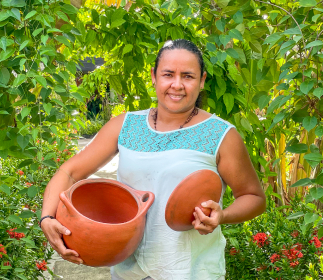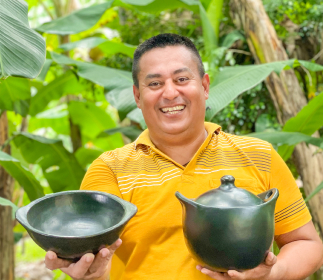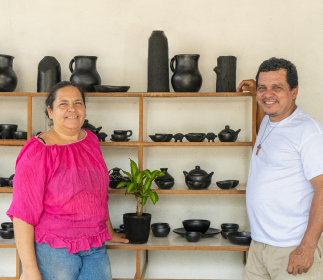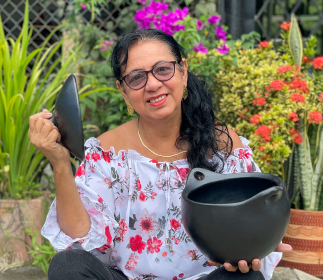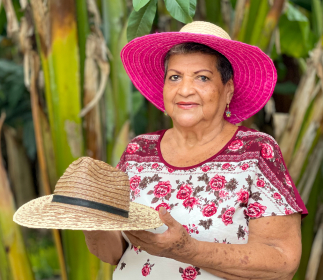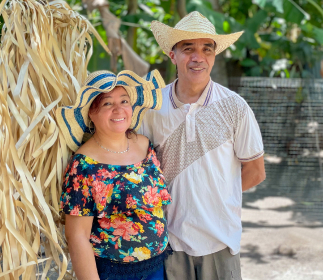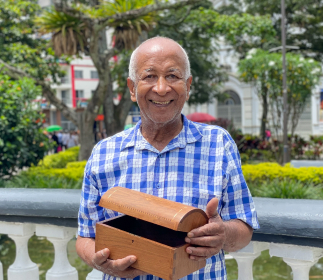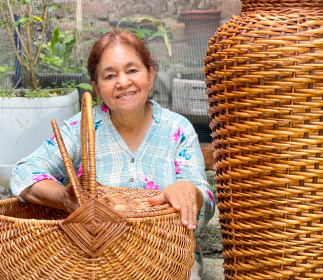Rosalía Triana
She inherited the liking for the trade from her grandmother, Carmen Triana. And she witnessed her mother, Saturnia Triana, support her seven children on her own because, and she says it without shame, “my father did not even give us a last name.” This family, which does not fear work, has made a name for itself weaving wicker and chipalo fiber, and Rosalía feels glad knowing that the best heirs of her artisanal knowledge are her two sons, Henry and Óscar.
Talking, she retraces her steps. She recalls the woven furniture with which she learned the trades many years ago until she reaches the vases, trunks, picknick baskets, and small animals that have made her famous in fairs. She also remembers her husband, Silverio, who she lost a couple of years ago and who she tasked herself with starting their family business. It came to be very successful and even had 10 employees at its largest, but it crashed when an uncontrollable weevil plague in the wood affected the harvest.
Nonehteless, everything in her, in them, is resilience. And, above all, she wished to power through. Because of this, as soon as she noticed that her husband’s wages were too low and his hours too high, she did not waiver to tell him that, given the circumstances, they should start weaving for themselves. At the beginning, he hesitated whether to take the leap, but he let her convince him and never regretted the decision. The quality of their work made them renown and caused the order with which they took off: making the famous chairs with woven wicker backrest and seat that can be found in many Colombian houses. They did not know how to craft them when they asked them if they were up to the task. They, nonetheless, took the challenge head on and rapidly started working. They learned everything, even turning this basketry trade into their main source of income. The woven trays followed. And, as she stands out while remembering, everything was a learning experience. For instance, when they saw that the triplex on which the weave was stuck got twisted, they found that the best way of giving stability to their wares was to make them a wire structure.
Due to the constant improvement of the product, Artesanías de Colombia noticed this family and worked together with it and their community’s artisans to help them attain the Handmade Quality Seal for their woven products, with which today they never cease to surprise their customers.
Regardless of her many awards, Rosalía wishes to make special emphasis on the process of craftmaking, particularly on the gathering of raw materials, which she describes as being an entire universe in it of itself. There, she includes the beliefs that surround her harvest, telling us that it is better to cut wicker rods during the waning moon, meaning the crescent moon, at the very same time when people are advised to cut their hair. She explains how it gets cut when it is green and how the skin that covers it, which they call “cascarita,” with a band. Afterwards, the rod is left under the sun and, when it is very dry, it gets cut to the size of the ware that will be crafted with it. There, a small cross is opened that will serve as a splitter and that allows there to be three to four rods to work with. The chosen piece is soaked in wáter and passed through a machine that is like a squeezer that will leave the raw materials ready to get woven… it is a lengthy process.
This is what she wishes to show us: the time this trade demands. Even more so if you weave with chipalo vine. Rosalía takes the oportunity to talk about this fiber, about which she does not hesitate to tell us that its true heroes are the people who find it in the forests, high up in the trees. They harvest it facing many dangers and difficulties, like walking among snakes, felines, and steep terrain. Those who do this are experts at harvesting: wisemen who patiently untangle the vine and cut it the right way, without killing the tree. Collecting this fiber is an entire feat: that is where its value comes from. Unlike wicker, which, although it has the qualities of a handicraft due to the use of hands throughout the weaving process, can be squeezed with a machine; the chipalo’s scraping and extraction process is manual and is carried out by pulling with a rope.
She knows this, she knows of the effort that comes with this work. And she wishes to portray this in wares worthy of admiration and the trade. She enjoys speaking of crafts in this way: as an object with a whole path that deserves our attention.
Craft
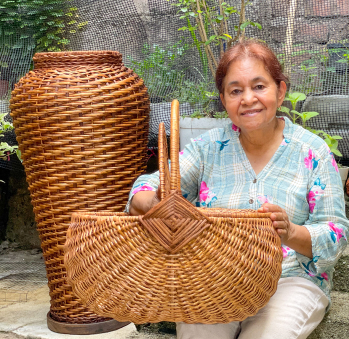
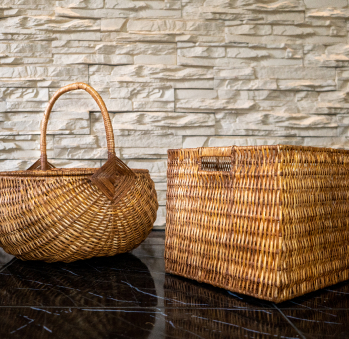
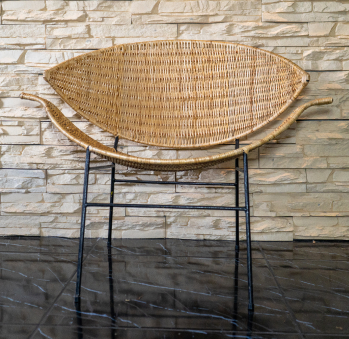
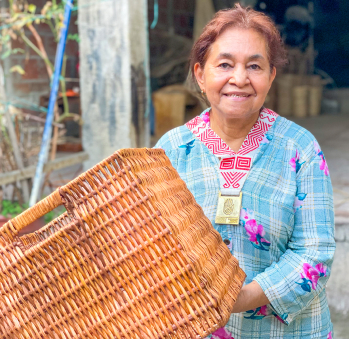






Artisans along the way
Artisans along the way
No puede copiar contenido de esta página

